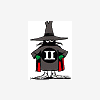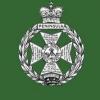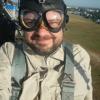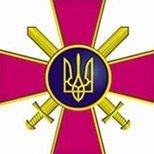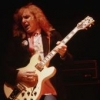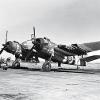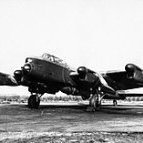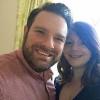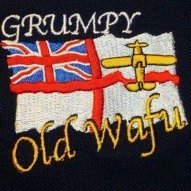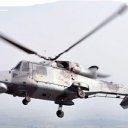Search the Community
Showing results for tags 'Seafire'.
-
I plan to build my Airfix 1/48 Seafire FR.47 carrying 4.5" reconnaissance flares. According to Spitfire - The History, it could carry 4 of them. The only issue I have is how & where to mount them. Are there any photos showing them loaded? The Seafire FR.47 could carry 4 Light Series Bombs under each wing, which were obviously heavier than the 23 lb. 4.5" reconnaissance flares. I can scratch build the flares no problem, but I need info on the mounts/racks. I couldn't find any pictures or drawings of any bomb racks or such, on which to mount them. Can any knowledgeable person help me? Larry
-
A while ago I floated the idea of doing a Supermarine Seafire for this GB and with my entry in the 60s NATO Vs Warpac GB almost finished I got bored waiting for paint to dry and rather than touch any of the many stalled projects littering the peripheries of the workbench decided, aided in no small part by a pile of Seafire references lying close to hand and being glanced through as bedtime reading, to start something new NN460 H6-Z features as a profile in a couple of my books and they seem to agree for the most part with a couple of minor differences in the details. Looks nice doesn't it? Think I'll have a crack at building it with this; With only a month and a half remaining of the GB I'm unlikely to finish it given my slow speed of typical progress but sod it, here we are now, a new challenge
- 49 replies
-
- 6
-

-
- Seafire
- Special Hobby
-
(and 1 more)
Tagged with:
-
Here it is...I'm happy with it although I have built better kits. The kit itself is oddly designed. The hard points are set up for the modeller to measure and figure out where to place them, etc...the canopy is wonky and fits poorly...however, it is the best in 1/72nd scale so far, or so I believe. Decals were ok, if a little fragile. No need for any solvents or soaps. I kept the weathering to a minimum and just did a little exhaust staining. Next up...something from this big box...😁 --John
-
Of the four 1/48 Spits that I have on the bench at the moment, I would like to ask our favourite hive mind for some advice/confirmation on the colour scheme/equipment fit for Spitfire Mk.VB BL676 which was to become the first hooked Spitfire used for Carrier Landing trials before being converted to full Seafire specifications. I will be using the Dutch Decals Presentation Spitfires stickers and the On Target Model Alliance Seafires profile book for guidance. The On Target profile seems to be reasonably accurate as far as camouflage demarcations are concerned compared to the numerous photos of the airframe available from Google searching the serial number. I don't want to link copywrited photos here (and don't want a slapped wrist if I infringe other photographers' property) so have just included links to a number of easily found photos. If I can link them and I'm being too cautious can someone tell me what I should be doing/what info to include so as to keep in Mike's good books! Photo 1 Photo 2 Photo 3 Photo 4 Photo 5 Photo 6 Photo 7 Now a noticible difference that jumps out at me from the photos over the decal instructions/profiles is that both the windscreen and canopy framing appear to be in the complimentary camouflage colour rather than just the windscreen (very conspicuous in Photo 3). I'm assuming that the actual colours called out in the On Target profile, Mixed or Ocean Grey and Dark Green are correct as all photos I have seen (especially the earlier ones) have a high contrast between the two colours. Does the hive agree that the windshield/canopy framing should both be grey rather than the surrounding green? I am happy that the profile has correctly depicted the fuselage ID band (photo 7 shows it the clearest), as it has been overpainted in MSG on the underside (the decal instructions show it all round the fuselage). I am builing with a hook rather than the dummy one so have already overpainted the underside. The photos appear to show an aerial between between the antenna and the rudder post and I think I can make out IFF "cheesecutters" (is that the right term?) from the stabilator tips to the centre of the fuselage roundel. Also on photos 5, 6 and 7 there is clearly a FAA syle IFF aerial under the starboard outer wing. Photos 5 & 6 appear to be earlier photos as the hook has not yet been fitted (unless it could be easily be whipped off if not needed but I can't see that as credible). Would the IFF cheesecutters and FAA aerial be fitted at the same time? Lastly there are 4 patches on the airframe, an oval one on each side of the firewall and rectangular ones behind the cockpit but in front of the roundel. My best guess is that these are hoist points? In photos they appear quite light in colour. I can't see natural metal being left uncovered especially for a naval aircraft so what's the best guess for the colouring (and real purpose if they're not for hoisting) of these plates/patches. Thank you for your help and wisdom (which my time here shows me that the contributors to this site have in spade-loads). I promise an RFI as a thank you for all your anticipated input and can only apologise for the lack of WIP's of late as life outside the mancave has that annoying habit of getting right in the way. If I'm miles off the mark with any of my assumptions please let me know so I can take my beatings like a man now rather than in the RFI sections!!!
- 3 replies
-
- 1
-

-
- Spitfire
- Dutch Decals
-
(and 1 more)
Tagged with:
-
As promised, my next 'Spitfire A-Go-Go' instalment will be Special Hobby's Seafire in 1/72nd scale, as flown in July of 1950 during the Korean War. I have read many threads in praise and some not so praiseworthy. I will make up my own mind once I am done. In any case it looks like a dangerous wee beastie to be coming across in the sky. This is the one I'll be building. And the sprue shot. I have already primed them. I'll start in this evening or this afternoon but then I head to Athens tomorrow for some r-n-r. --John
- 85 replies
-
- 12
-

-
- Seafire
- 1.72nd scale Seafire
-
(and 1 more)
Tagged with:
-
Does anyone know of any post-WWII FAA prop types, such as the Firefly, Sea Fury or Seafire. Tried L'Arsenal and WEM and neither does anything suitable, even for conversion. Wanting to build both my Heller Illustrious and Colossus, but can't find anything to stick on the flight decks! Maybe I should just have a bunch of crew watching a boxing match..... http://northstarmodels.com/2014/02/new-items-for-ships-in-1350-scale-askold-line/ Honestly, you can buy a boxing match, but you can't buy proper aircraft......
-
Seafire F.46 - RNAS Lossiemouth Station Flight, 1948 Scratch conversion of Airfix 1/72 Spitfire Mk.22 - Model Alliance Markings I'm still immobile and broken at this end, so modelling on a coffee table next to my sofa whilst my bones heal! However, that's no excuse, so this month I have tried something a little more adventurous. The Seafire 46 is essentially a navalised Spit 22, so a relatively easy conversion in this scale and this is exactly what Airfix did with their 1/48 kit (same markings too!). The contra-rotating prop was scratched up from the kit spinner, suitably extended and thinned by a blob of Milliput, plus a spare blade from another kit. Shaping it, then drilling holes for the blades was a fairly major challenge under the circumstances, so it is a little rough, but I'm pleased to have managed at all. Likewise, the tail-hook will require some more work when I am back on my feet again and can fabricate an actual hook. Decals come from a Model Alliance set for the Lossie CO (Capt Caspar John RN)'s personal mount, which was, by all accounts, maintained to gleaming Captain's rounds standard. Brush painted as always, with Humbrol Enamels, a light oily wash and Klear topcoats (and I went for a half black/half green cockpit option FWIW). With thanks to Mrs T, who is doing a lot of the basics for me at the moment, but happily did a lot of extra fetching and carrying for me from my model room to my coffee table! FredT
- 12 replies
-
- 39
-

-
- Fleet Air Arm
- Airfix
-
(and 1 more)
Tagged with:
-
Never given up on a kit yet! I can't claim this as anything more than a bit of fun - but isn't that what modelling is for? I didn't buy this kit deliberately; it came as part of a job lot of Airfix kits in blister packs. I knew it was bad, but it is actually a lot worse than I thought. Rather than despatch it to the landfill, I thought I would have some hot summer fun trying to get something approximately useful out of it. Seafire Mk III of 880 Sqn, HMS IMPLACABLE, British Pacific Fleet It is intended to be the aircraft of Lt Cdr M Crossley, complete with ex-Australian/US P.40 drop tank, as used by the 8th Carrier Group to extend the Seafire's range. Funnily enough, the drop tank actually came from a P.40 kit. ... and now the grand reveal; this is the kit I started with! It is a truly awful kit, barely reminiscent of a Spitfire even if you look at it with your eyes half closed in a dark room. However, it does build quite well, which is possibly why Airfix kept selling it for so long. I re-shaped the fuselage as best I could, added a hook, removed one set of gun barrels, replaced one radiator with an oil cooler, lengthened the undercarriage leg slightly, added some better looking spare Spitfire wheels and added a strengthening strip on the fuselage sides. You will notice I have not taken any pictures of the underside of the wing. Those of you who are familiar with the kit and its flat underside will know why! I did, however replace one radiator with an oil cooler and add an extended air intake. But hey, I've got another "Seafire" in the collection and the planet has been saved from one more lump of deformed plastic in landfill. That makes 13 Seafires to date, plus a Seafang: Fred's Seafires. 13 doesn't sound like a lucky number, so I better get on and build another..... FredT
-
Getting back on the horse after the disappointing early end to the Super Etendard build. Having just finished an Airfix Spitfire Vb in the RAF centenary GB and been left wondering why it had been 30+ years between Spitfire models, here's another - the Airfix Seafire XVII. This will be part of a slightly ambitious Griffon Spitfire/Seafire triple build along with the Airfix PR.XIX and the Eduard/Airfix F.22/24 - ambitious because I'm going to try to get all three done before overseas travel curtails my modelling at the start of June - but given how quickly the Vb went together I think it can be done. Here's the box shot. I also have a Freightdog decal sheet, Eduard masks and Quickboost exhausts. Plus I have two Barracuda carburettor intakes and one set of Barracuda 5-blade props so will need to decide which kits get those. If I get time after work I'll start tomorrow.
-
Decided to join this GB with (hopefully) a simple build to start with, Sword's 1/72nd Seafire Mk.XV. Just one sprue of grey plastic parts with one small clear and PUR exhausts and cannons. Going to do the NAS 806 Aussie Tour version, everything out the box as they say.
-
Hi all, I finally got around to finishing this kit, I've had it built but unpainted in it's box for months now and I recently saved it from the shelf of doom. The kit was built and painted in my usual way using model air colours. Any criticism or comments highly welcome!
-
Just wanted to share some pics of one of my latest finished models. Supermarine Seafire FR.46, LA546 / 600 LM, RNAS Lossiemouth, 1948. From the Special Hobby kit #72231, just added a few details in scratch, a new instrument panel, scribed some lost panel lines and rivetted the whole airframe. Here's the model: And a picture of the real thing... Hope you like it! UnCarlitosModelista
-
As I slowly add to my retirement list/ stash, it's time to move to 1/72 Seafires. If you had to build say 4 marks from beginning to end, what would they be, what kits, what AM? I'd like to cover scheme differences and major 'visible' changes. Over to you guys. Stuart
-
Hello and welcome to this RFI of my latest venture into plastic. This build is of "The Airfix Seafire FR47 in 1/48th scale". It was a wonderful kit to build there were a few fit issues and the wing if done folded needs some scratch building but most if not all can be done OOB, in fact, looking back this one is OOB, I scratched a few items which I will list in a sec but other than that I didn't buy any extras and I'm really happy with the result. The name "up and down like a brides nighty" refers to the configuration of one wing up and one wing down. just so you don't think I'm a perv. Here's the WIP if you didn't catch it live. Thanks to everyone who helped me along the way with this one, it was a great build and I'm sad to see her finished, but as with all good thing they must come to an end. I hope it stands up to inspection from you lot. I'm not 100% happy with the photos as I didn't get to take them outside as planned. 'twas wet in the Midlands today. So without further ado I shall begin. The build as I said was pretty much OOB, I scratch built the internal cameras. left the canopy as is (I know its a tad high) but micro meshed the hell out of it to get shiny. Scratch build the bullet proof part in the canopy. fuse wire aerial. cut the rear flaps to add interest. And I think that was it for modifications. She was painted (airbrush) and (hairy stick) using Tamiya and Vajello acrylics. I did truHumbrol but if you followed the WIP that can be found here (I'll add a link in a sec) you will know the story of that nightmare. There are a ton of pics as I couldn't quite get the right light but hey that's what RFIs are all about right?........right? Ladys and Gentlemen may I introduce my latest............ Phew, and there we are. Looking at the shots on my daughters laptop I'm actually more happy with them. I hope you all enjoy the model as much as I did building and photographing her. I have started another build here, should you wish to tag along. It's going to be BIG! Take it easy guys and I hope all of you who went or are going have a wonderful time at Telford. See you all on the other side and as always. Happy Modelling. Johnny Seafire.
- 25 replies
-
- 31
-

-
Hi Guys, I've been coming here on and off for a while now with various technical questions for projects, so I thought it was about time I put my money where my mouth is and actually post something. This is the first scale model I've made about 15 years, and last time I tried something I had no idea of techniques and no money to buy proper colours, air brushes etc. So with that in mind, please go easy as I'm both a beginner and out of practise! This is the Airfix Seafire L.III, straight out of the box with Eduard etched brass cockpit details. I've done nothing else, other than my first attempt at scribing as the fuselage is an old mould and a friend of mine said I should! I went very easy on weathering as I know this is easy to get carried away with, but I've subsequently increased the dirt and stains on the underside of the aircraft. If any other beginners are considering this model, I'd probably recommend to look elsewhere. I've got a couple of years experience with wargaming - some of the skills are transferable, some are not - but things like attaching the arrestor hook were a huge job because the parts simply did not match up once the lower fuselage was cut away on the guidelines, resulting in a lot of man-hours being spent with modelling clay and filing.
- 10 replies
-
- 21
-

-

-
- Fleet Air Arm
- Seafire
-
(and 1 more)
Tagged with:
-
Hi chaps, currently have the 1/48 Airfix Seafire Mk47 on the go, plan to do the standard scheme with EDSG and sky/beige. Question is which is more accurate sky or beige green as I've seen both used.
-
Supermarine Seafire Mk.III "last Fights Over the Pacific" Special Hobby 1:48 It is believed that the Admiralty first showed an interest in a carrier based Spitfire as early as 1938, when Fairey Aviation proposed such a modification could take place. This idea was rejected and subsequently left the Fleet Air Arm to order other less capable aircraft. The matter was again raised in 1939 and a Spitfire was fitted with an A Frame arrestor hook. After further investigation folding wings were added to the specification. At the time one of the major factors holding back a Sea Spitfire (or Seafire as it was to become) was that production capacity was needed for land Spitfires. Due to this Wildcats were ordered from Grumman for the FAA to be called the Martlet. By the end of 1941 the Admiralty again looked at Spitfire project. 48 Spitfire Mk Vbs were converted by Air Training Services at Hamble to become hooked Spitfires. These would allow the Royal Navy to get experience operating the type, which due to its narrow undercarriage and high nose was not the ideal carrier aircraft. The second major type for the RN was the Seafire Mk II, this used a cropped supercharger to provide greater power at lower levels. The IIc was the first major mark to be deployed in any number. The Seafire Mk III was the real first true carrier Seafire. It was developed from the IIc. It had manually folding wings allowing more aircraft to be carried. The wing would fold using a system of two straight chordwise folds. A break was introduced immediately outboard of the wheel well where the wing would fold upwards and slightly forward, a second fold would be at the wingtip. The Mk III would use the Merlin 55 engine with a 4 bladed prop. The Mk III would be used by the Fleet Air Arm, The Irish Air Corps, and the French Aéronavale. The French would receive 65 Mk IIIs which were deployed to Vietnam on board the carrier Arromanches in 1948. The Irish Air Corps were supplied with 12 Mk III in 1947 which were stripped of their Naval equipment (except the wing fold) by Supermarine. The Kit The kit arrives in a fairly sturdy box. Inside are three large and three small sprues of grey plastic, a clear sprue, a sheet of vinyl, a sheet of photo etch; and an instrument panel film. Construction as with most aircraft starts with the cockpit area. The bulkhead forward of the pilot is made up along with the instrument panel. This is added to the engine firewall, the floor area including rudder pedals and control column is added. The seat can then be attached to its backing of armour plate, this along with the headrest is then added to the rear fuselage frame. PE seat belts and harness straps are then added. The next step is to add both of the previous subassemblies onto the main fuselage. Lage side panels with relief details are also added at this stage. The fuselage can then be closed up. The vinyl parts can then be applied to the closed up fuselage. The next stage in construction is the wings. The upper wing halves are attached to the one part lower wing. The internal sections of the wheel wells need to be placed inside the wing sections before they are closed up. The right cannon bulges need to be glued to the upper wing. There is no internal structure under the bulges. Be sure to use the right cannon bulges as there are four different sets on the sprues. The propellor is the next sub assembly to be built up, along with the arrestor hook parts If your build needs them). The next major task is to attach fuselage to the wings. Following this the tail planes, rudder, ailerons; and wing tips are added. Attention then turns to the underside of the aircraft. The radiators, engine under cowling, air intake and tail wheel are added. If your aircraft has an arrestor hook this sub assembly is also added, if not then a plate is added to this area. The undercarriage is also assembled and added at this stage. Finally to wrap up your build the engine exhausts, appropriate cannon barrels, aerial mast, entry door, propellor assembly; and canopies are added to the kit. Photo Etch & Vinyl A small photo etched fret is provided for the seat belts & harness, Instrument panel, rudder pedals, escape crowbar, and fuselage stiffening plates. A self adhesive vinyl sheet provides for raised areas on the fuselage where even PE would be too thick. An acetate film is provided for use between the PE instrument panel parts. Canopy The clear parts are very clear and remarkably thin. Care will need to be taken removing them from the sprue. I am not sure if the main canopy will fit over the rear part as the instructions do not show this. Decals Decals are provided for 3 aircraft. PR256, 894 Sqn HMS Indefatigable. April 1945. PR240, 880 Sqn HMS Improbable, June 1945. NN212, 887 Sqn HMS Indefatigable, August 1945. All decals are printed by Aviprint, are in register and colour density looks good. Conclusion A good re-release from Special Hobby showing aircraft from the last combat patrols of the FAA in the Far East. In fact NN212 took part int eh very last combat of the Fleet Air Air of WWII. Highly recommended. Review sample courtesy of
-
I am trying to determine the serial number and possibly plane code of a 894 Squadron Seafire piloted by Sub-Lt Fred Hockley lost near Tokyo Bay Aug 15, 1945. I have Morgan & Shacklady's big book of Spitfires but am at a loss finding this particular aircraft. Any other resources on-line or in print that might possibly help? Many thanks, Donald Anderson
-
Kit manufacture: Airfix Scale: 1/48 Type: Seafire F.XVII Extras used: Quickboost exhausts, Eduard photoetched cockpit set Paints and colours used: Tamiya Sky XF-21, Xtracrylix Extra Dark Sea Grey, MM Metalizers, Citadel metals, Tamiya acrylics, Flory Dark Dirt and Grime washes, Xtracylix satin varnish Other info: Full build is here : ****link here**** So, at last she's all done. I hear these beautiful aircraft were extremely well maintained. I wanted to give her a bit of weathering, but my approach of adding a little chipping didn't really work out. The one thing these aircraft certainly wouldn't have is exposed metal, I have been reliably informed, any signs would have been immediately dealt with. Therefore, I spot-painted her to give her a touched-in look. Although I'm happy enough with the effect, it's way over weathered. But it was fun! Other things to note: the prop is on the wrong way round. Yeah, that's basically my fault... Can't really think of an excuse for that one...! The kit is absolutely excellent. It's almost faultless. Fit is perfect, no filler required. Decals are excellent. I hear there is a few accuracy issues, particularly around the wheels and wing blisters. The panel lines are maybe a bit deep, but to be honest, I think they're fine when finished. The only problem I had is with clean up due to large sprue gates and I snapped some of the smaller parts trying to remove them due to the soft plastic. The pics: The lights were painted with clear Tamiya paints, and backed with silver foil to (hopefully) give a realistic look: And here she is with my 1/48 collection: Thanks for looking everyone, and for help/encouragement in the thread. Val Edit: Fix build thread link
- 33 replies
-
- 32
-

-
Supermarine Seafire Mk.III Special Hobby 1:48 Our friends at Special Hobby have sent us two boxings of their Supermarine Seafire Mk.III Kit. The first is for those used by the Irish Air Corps and The Aéronavale. The second is for The Fleet Air Arm and is boxed for the 70th Anniversary of D-Day. It is believed that the Admiralty first showed an interest in a carrier based Spitfire as early as 1938, when Fairey Aviation proposed such a modification could take place. This idea was rejected and subsequently left the Fleet Air Arm to order other less capable aircraft. The matter was again raised in 1939 and a Spitfire was fitted with an A Frame arrestor hook. After further investigation folding wings were added to the specification. At the time one of the major factors holding back a Sea Spitfire (or Seafire as it was to become) was that production capacity was needed for land Spitfires. Due to this Wildcats were ordered from Grumman for the FAA to be called the Martlet. By the end of 1941 the Admiralty again looked at Spitfire project. 48 Spitfire Mk Vbs were converted by Air Training Services at Hamble to become hooked Spitfires. These would allow the Royal Navy to get experience operating the type, which due to its narrow undercarriage and high nose was not the ideal carrier aircraft. The second major type for the RN was the Seafire Mk II, this used a cropped supercharger to provide greater power at lower levels. The IIc was the first major mark to be deployed in any number. The Seafire Mk III was the real first true carrier Seafire. It was developed from the IIc. It had manually folding wings allowing more aircraft to be carried. The wing would fold using a system of two straight chordwise folds. A break was introduced immediately outboard of the wheel well where the wing would fold upwards and slightly forward, a second fold would be at the wingtip. The Mk III would use the Merlin 55 engine with a 4 bladed prop. The Mk III would be used by the Fleet Air Arm, The Irish Air Corps, and the French Aéronavale. The French would receive 65 Mk IIIs which were deployed to Vietnam on board the carrier Arromanches in 1948. The Irish Air Corps were supplied with 12 Mk III in 1947 which were stripped of their Naval equipment (except the wing fold) by Supermarine. The Kit The kit arrives in a fairly sturdy box. Inside are three large and three small sprues of grey plastic, a clear sprue, a sheet of vinyl, a sheet of photo etch; and an instrument panel film. Construction as with most aircraft starts with the cockpit area. The bulkhead forward of the pilot is made up along with the instrument panel. This is added to the engine firewall, the floor area including rudder pedals and control column is added. The seat can then be attached to its backing of armour plate, this along with the headrest is then added to the rear fuselage frame. PE seat belts and harness straps are then added. The next step is to add both of the previous subassemblies onto the main fuselage. Lage side panels with relief details are also added at this stage. The fuselage can then be closed up. The vinyl parts can then be applied to the closed up fuselage. The next stage in construction is the wings. The upper wing halves are attached to the one part lower wing. The internal sections of the wheel wells need to be placed inside the wing sections before they are closed up. The right cannon bulges need to be glued to the upper wing. There is no internal structure under the bulges. Be sure to use the right cannon bulges as there are four different sets on the sprues. The propellor is the next sub assembly to be built up, along with the arrestor hook parts If your build needs them). The next major task is to attach fuselage to the wings. Following this the tail planes, rudder, ailerons; and wing tips are added. Attention then turns to the underside of the aircraft. The radiators, engine under cowling, air intake and tail wheel are added. If your aircraft has an arrestor hook this sub assembly is also added, if not then a plate is added to this area. The undercarriage is also assembled and added at this stage. Finally to wrap up your build the engine exhausts, appropriate cannon barrels, aerial mast, entry door, propellor assembly; and canopies are added to the kit. Photo Etch & Vinyl A small photo etched fret is provided for the seat belts & harness, Instrument panel, rudder pedals, escape crowbar, and fuselage stiffening plates. A self adhesive vinyl sheet provides for raised areas on the fuselage where even PE would be too thick. An acetate film is provided for use between the PE instrument panel parts. Canopy The clear parts are very clear and remarkably thin. Care will need to be taken removing them from the sprue. I am not sure if the main canopy will fit over the rear part as the instructions do not show this. Decals - Aéronavale & Irish Air Corps Decals are provided for two aircraft as used by the The Aéronavale. I.F.12 Flottile 1.F The Aéronavale, Aircraft Carrier Arromanches 1948. FAA Camo, French roundels and a replacement rudder. 54.S.14 (exPR146) Flottile 1.F The Aéronavale, Aircraft Carrier Arromanches 1947. Older airscoops and longer cannon barrels were fitted. This aircraft retained its post war FAA paint scheme and markings. French unit markings were added to the fin. Markings are also supplied to make any one of four Seafires as used by The Irish Air Corps based in Gormanston 1947. Decals - D-Day Fleet Eyes Decals are supplied for two FAA Seafires with Invasion Stripes (The modeller has to paint these) NF541 886 Naval Air Squadron, No3 Air Spotting Wing, RNAS Lee-On-Solent 1944. Full invasion stripes were painted as the aircraft spotted for Naval Gunfire. On 8/6/44 this aircraft flown by Sqn L Chapman shot down a Bf 109. The aircraft was painted in the RAF Daylight Fighter Scheme. The instructions indicate the tail parts were replaced and left in a base green colour (Primer?). This aircraft had clipped wingtips. NF547 885 Naval Air Squadron, No3 Air Spotting Wing, RNAS Lee-On-Solent 1944. Full invasion stripes were painted as the aircraft spotted for Naval Gunfire, in particular HMS Warpite. On 7/6/44 the aircraft was shot down by AA fire and crashed in France. Lt Hugh Land (RNZNVR) managed to destroy the aircraft and evade getting back to Allied lines on 18/6/44. All decals are printed by Aviprint, are in register and colour density looks good. Conclusion From MPM kits I have bought in the past the plastic parts in this kit do seem to have improved. They are well moulded with fine engraved panel lines. There is a tiny amount a flash on some parts but certainly nothing the modeller can not remove. Its good to see this kit available in different boxing with just more than FAA markings. Overall I would highly recommend this kit. "Aéronavale & Irish Air Corps" Boxing "D-Day Fleet Eyes Boxing" Boxing Review sample courtesy of
- 5 replies
-
- 2
-

-
- Special Hobby
- Seafire
-
(and 3 more)
Tagged with:
-
Hello, This is the Tamiya Spitfire Vb converted into a Seafire Ib. I just added a hook for deck-landing. I never found any picture of NX956 but according to NX957 the stiffeners on the wings still there and the old fashion windscreen too.
-
Supermarine Seafire FR.46 Airfix 1/48 Hi Guys Airfix's classic Seafire, build March 2014. I got this as a present from my cousin so, as it didn't cost me anything, I decided to splash out on a few AM accessories to tart it up a bit. so in no particular order. Quickboost resin seat Quickboost resin exhaust Barracuda resin wheels Rob Taurus vac canopy Montex paint masks (only used for the roundels) The Taurus canopy was pretty much essential as the kit part doesn't fit in the open position and mine was badly fogged anyway. The Barracuda wheels were fantastic, I'll definitely be using their stuff again. I was expecting a nightmare with the Montex masks but in the end they worked really well although it was a little nerve wracking pulling them off at the end, hoping that everything was in register. The only other additions were a few scratched details in the cockpit (which you can't see) and some brass tubing for the gun barrels. Hope you enjoy the shots Thanks for looking Andy
- 56 replies
-
- 56
-

-
Good day all I rescued these two from the shelf of doooom where they had sat for a good many years. First up is the Airfix FR46. There is much debate out there on this so I opted to put in cameras (very nearly put in a wing fold!) The read that it didn't have cameras so deleted them but may be mixed up with the Lossie version in an earlier kit. I ummed and erred but plumped for OOB version of 1892 NAS at RNAS Culham. I used the eduard cockpit set and model master acrylics. She is shown in a very clean state as I read that they were used by the CO of that squadron but that may also be erroneous! Next up is the Airfix LIII kit bashed with a Hasegawa Vb. I used the fuselage of the Hasegawa with the wings and hook from the Airfix kit. An entertaining effort if nothing else! She is from 887NAS from HMS Indefatigable. Straight OOB (es). This was also used a bit of a paint mule. I had bought a new (cheap) airbrush and was experimenting with freehand camo. All was going well until half way through following the light pattern I switched to the dark! So cam is a little 'non-authentic' or artistic license! I used both the kit decals and they were poor. The FR46 had a couple of smudged rounds. The LIII stencils disintegrated and I used what I could. Luckily the big ones held together. Enjoy and thanks for looking
-
Here's my contribution to this GB, a Seafire MkIIc from Sword. Two options on the transfer sheet, a Seafire LIIc from 809 NAS from HMS Unicorn at Salerno and standard MkIIc from880 NAS from HMS Argus from Operation Torch. Although the LIIc with its clipped wings detracts from the beautiful Spitfire wing form it is a little different from the norm so I'm going with that. And how can one not have a sharkmouth Seafire? The box contents is a single sprue with effectively a Mk V Spit, with an additional sprue with a new fuselage, four bladed prop and parts for the arrestor hook. There is also some resin cannons and a clear plastic transparency. Nice transfers and the modifications to the Spit Mk V fuselage to strengthen it for deck landings are nicely moulded. Hopefully a first coat of paint on the little parts before the end of this afternoon

